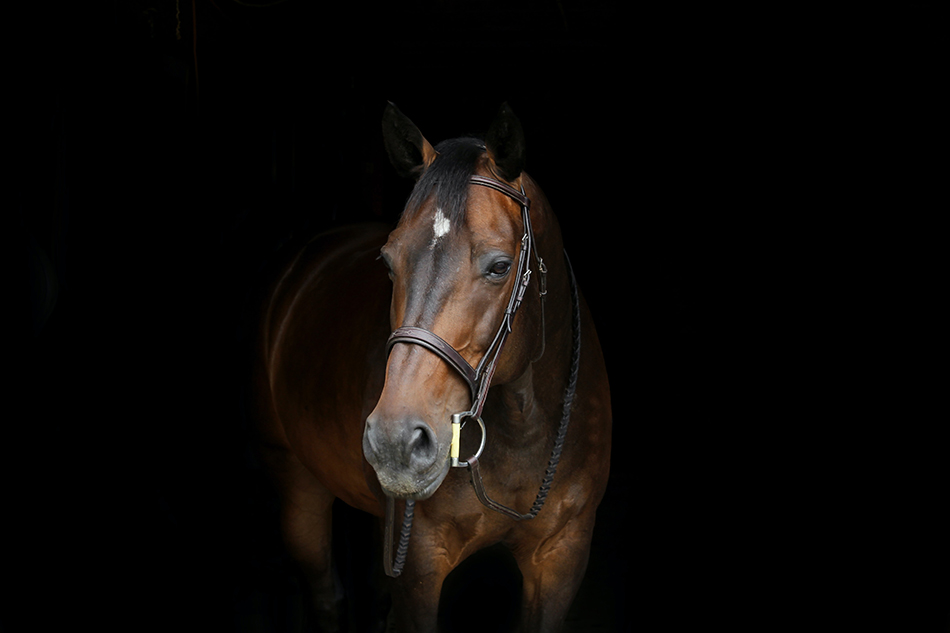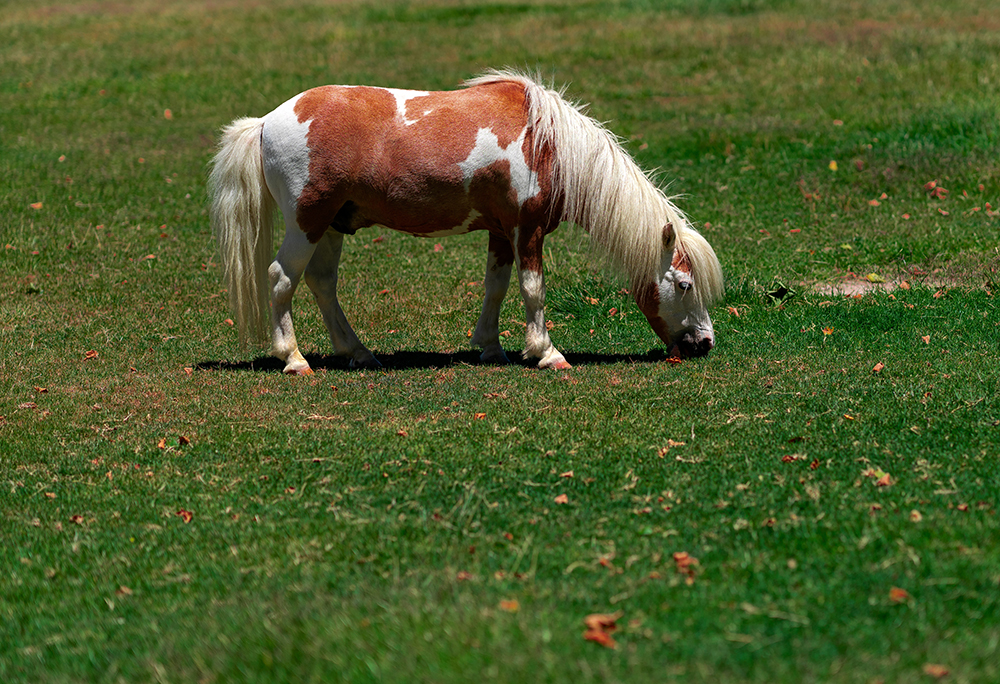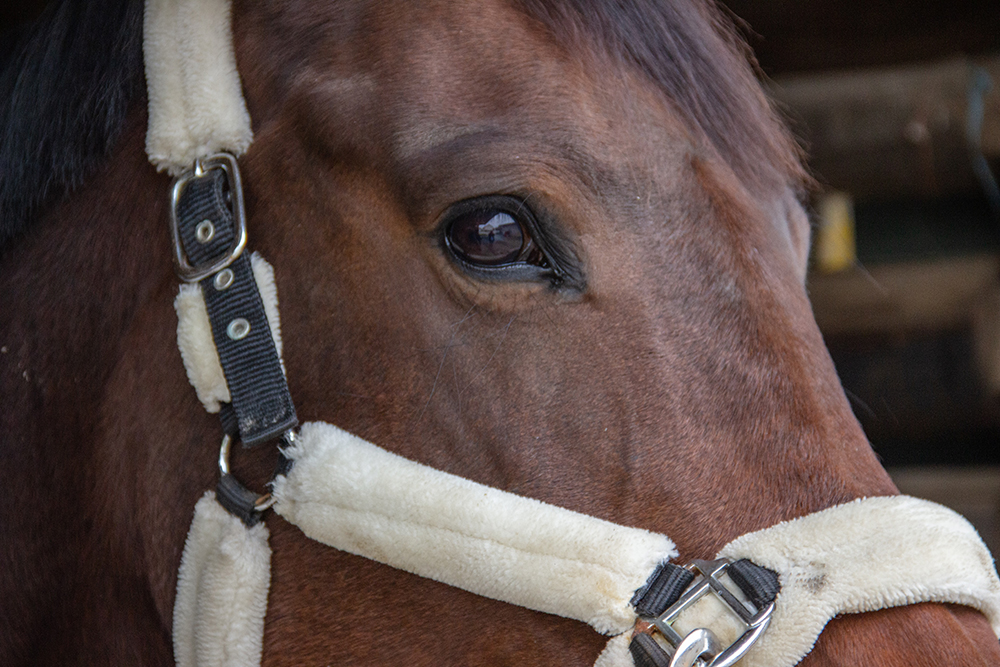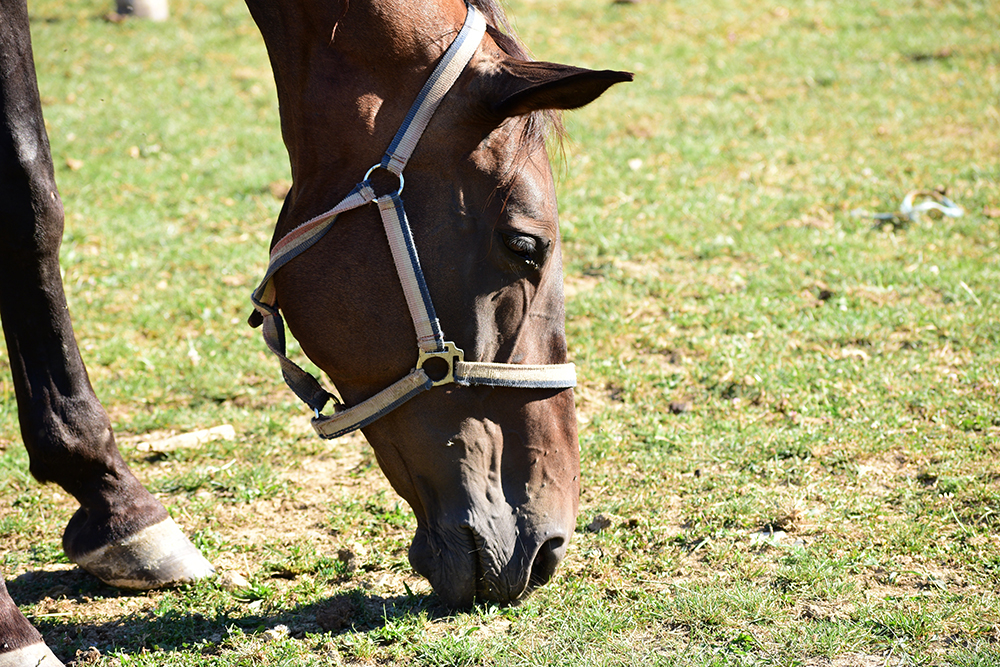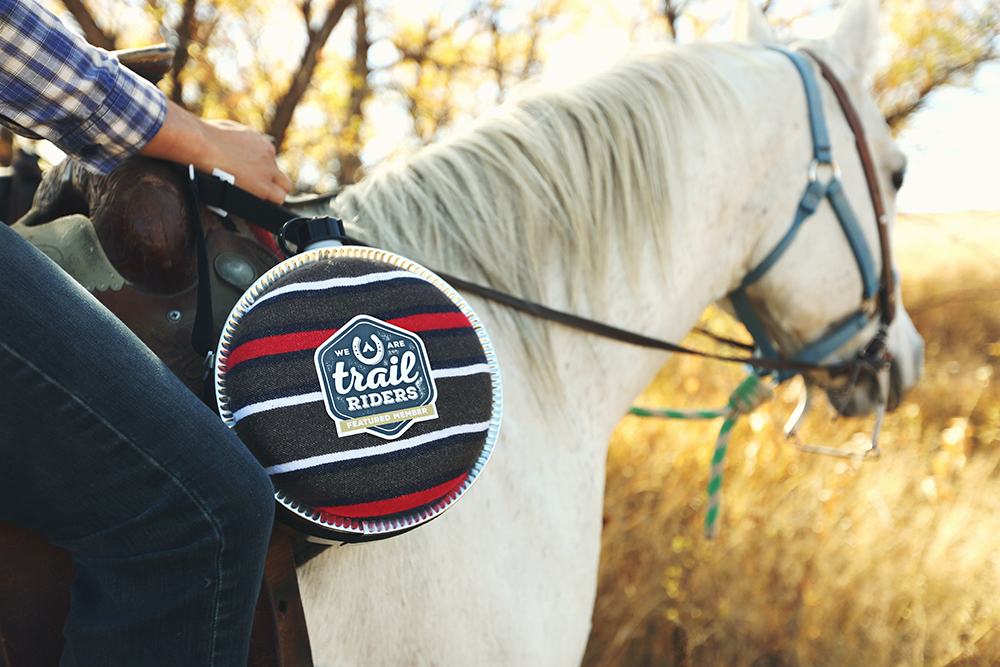Horse halters should be tight enough that you can only fit two to three fingers between your horse and the noseband, throatlatch, and cheek pieces.
Halters are essential pieces of equipment in the equestrian world. Seriously, don’t be caught without one. If you’re concerned about the fit and feel of your horse’s halter (and you should be) then check out these four key areas on your horse: the crownpiece, noseband, throatlatch, and cheek pieces. When you select a new halter, avoid stripping off any tags until after you’ve checked to ensure it properly fits your horse.
A Properly Fitted Halter
A properly fitted halter will allow the horse to go about his life as usual, opening his mouth and chewing without hindrance. The straps should sit comfortably without rubbing. You should be able to fit two to three fingers between the horse and the halter.
An Improperly Fitted Halter
An improperly fitted halter will be either too tight or too loose. A halter that is too loose will easily slip off or slide down on the horse’s face. It will be loose enough that a stray object like a branch or a swinging hoof can get caught in it. A halter that is too tight will be uncomfortable and may rub.
Fitting Each Halter Part Correctly
Crownpiece
The crownpiece will rest behind the horse’s ears without rubbing. It should rest across the poll. If you can easily pull off your horse’s halter by the crownpiece then the halter is not properly secured.
Noseband
The noseband rests across your horse’s muzzle about halfway between the eyes and the nostrils. If you want to get technical, this will be about three fingers below the cheekbones.
Make sure the noseband isn’t too low set on your horse’s face as your horse can shimmy their way out of it. Check that the circumference is not too large. You shouldn’t be able to fit more than three fingers between the noseband and your horse.
Throatlatch
The throatlatch is the part of the halter that goes beneath the horse’s head. When hooked it should pass the two-finger test. If you can’t fit two to three fingers between your horse and the throatlatch, it’s too small. Likewise, if you can fit four fingers or more then it’s too large.
Cheek Pieces
As the name implies, the cheek pieces will run alone the cheekbones of the horse which is on the side of the horse’s face. These should be loose enough that you can fit two fingers between the halter and the horse.
Consider Size Before Purchasing
Let’s be real, a mini halter is never going to fit your Oldenburg mare. It’s just not. While halters can be adjusted they aren’t miracle workers. When you select a halter for your horse, you should be careful to pick a size that is likely to fit your horse well.
Horse Halter Size Chart
Let’s take a look at the common sizes of horse halters:
| Size | Noseband | Cheek Piece | Crown Piece |
|---|---|---|---|
| Mini | 6/5” | 4” | 15” |
| Pony Foal | 7” | 3” | 12” |
| Suckling | 7 ½” | 3 ½” | 13” |
| Small Pony | 9” | 5 ¼” | 19 ¾” |
| Large Pony | 11” | 6” | 20 ½” |
| Weanling | 11” | 5 ½” | 17” |
| Yearling | 11” | 5 ½” | 18” |
| Large Pony | 12” | 6” | 16” |
| Cob | 11 ½” | 7” | 24 ½” |
| Horse (Full) | 12 ½” | 8 ½” | 24 ½” |
| Oversize | 14 ¼” | 9” | 29” |
| Draft | 15” | 9 ½” | 26” |
These sizes will vary from retailer to retailer. It’s best to look at the individual halter in comparison to your horse’s measurements before making a purchase.
Check On Fit Regularly
Horse equipment has to endure quite a bit of wear and tear, and halters are no exception. You should make a conscious moment every few weeks to examine your hater’s condition. If you have a leather halter, make sure it hasn’t become too loose. If you have a nylon halter, make sure it’s not tearing or fraying.
It’s not a bad idea to have a few backup halters lying around in case yours goes missing or breaks.

